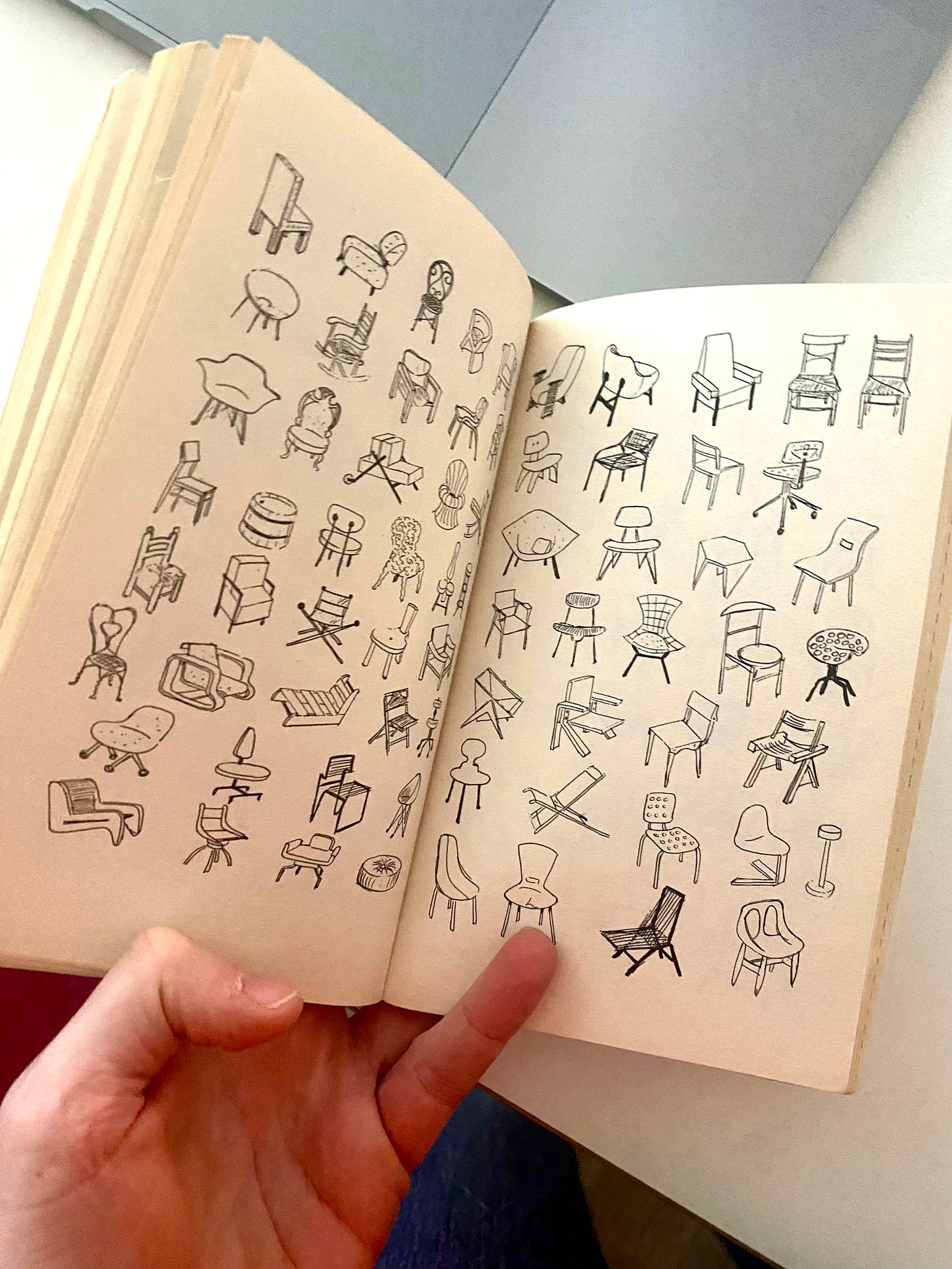Hasn't the World Got Enough Chairs?
Rereading Bruno Munari’s Design as Art 60 years on, some things haven’t changed. For one, we’ve still got more chairs than we know what to do with. And it's going to get a lot worse…
It never ceases to amaze me how relevant Bruno Munari’s book 'Design as Art' reads today, almost 60 years after writing.
In his book, which can be seen as something of a guide to the world of industrial design, the reader is treated to many nuggets of brilliance, from the relevance of good typefaces to the magic of designing for children.
But it’s his chapter on the overabundance of chairs which has a scary, prophetic relevance for today’s sustainability concerned times.
Consisting almost entirely of hundreds of little hand drawn chairs over several pages, the sketches in the chapter are accompanied by a very humorous account of the fact that the world, writing in 1966, had way more chairs than it could ever possibly need.
If only he could see the situation now.
Chair production in the European economic region alone has been on the incline for decades. Currently, chair production generates north of €60 billion in revenue annually, a figure which is purported to rise by 5% by 2028.
More shocking still is that an alarming number of the chairs produced today will be in landfills by the end of the decade.
I’m sure Bruno would be the first to agree that these statistics add an entirely new, perhaps sinister dimension to his light hearted chapter on chairs.
Then, as is true now, the humble chair has one simple mission: to be sat upon. Indoors or outdoors, office or train station, dining room or lounge: chairs have to be so many things for so many different occasions.
Metal or wood, expensive or cheap, comfortable or downright ridiculous, one off art piece or mass produced plastic nightmare: there’s a seemingly infinite amount of ways to make a chair.
And if that wasn’t complicated enough, they now also have to be sustainable.
Yes Bruno, because there are now more chairs on this planet than at any point in history, the chair now has an obligation to fulfil its function as a seating device while doing good for the planet.
This doubling of function has, of course, meant that designers and manufacturers have begun to experiment with producing chairs out of sustainable materials of all kinds - with varying degrees of success.
The result? Chair production has been turbocharged to new stratospheric volumes.
Worse still is this: the increasing numbers of chairs produced using sustainable, circular materials means that an ever increasing number of chairs produced today will themselves be reused and recycled - only to find themselves remade into more chairs in the future.
But weirdly, as if they’re running out of fresh ideas, manufacturers are increasingly digging into the past to create new chairs for the future. Reproducing old chair designs from the annals of design history and marketing them with a contemporary twist to infuse them with new purpose - circularity does indeed have a funny way of manifesting itself.
Either way, to get to that sweet spot where chairs can perform their duties as sitting devices whilst being harmless additions to the environment, one thing should be clear: we’re going to have to get through a hell of a lot more chairs first.
Please click the ❤️ button on this post so more people can discover it on Substack. Tell me what you think in the comments
Karin’s print is available to purchase here





